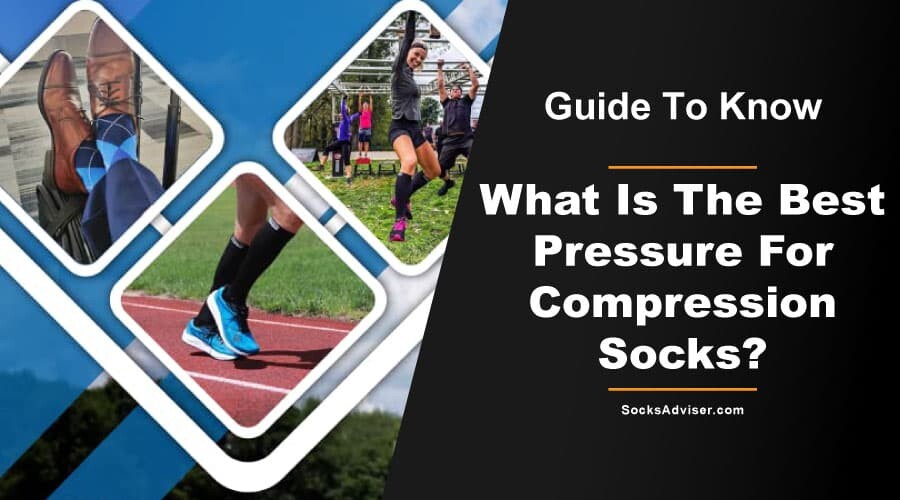If you have been using compression socks, one question that might have crossed your mind is whether you have the right compression socks.

Compression socks are available in various pressure levels. The best pressure level for a compression socks depends on your health needs or physical demands.
What is the best pressure for compression socks?
Studies have shown that low and high compression socks (15mmHg vs 40mmHg), are equally effective in managing thrombophlebitis and bruising. However, low compression socks offered more comfort and are easy to wear.
There is no specific ideal pressure for compression sock as it depends on your needs. For instance, if you need a compression socks that offers general health benefits, a light to medium (under 30mmHg) is the best.
Below are examples of compression socks and the pressure levels they offer.
How tight should compression socks be?
This is another commonly asked question among people who frequently use compression socks. The answer to this question is-it depends on what you want to achieve? Are you aiming to prevent blood clots in deep vein, enhance athletic performance, or avoid the formation of spider veins during pregnancy?
However, a good compression socks should feel tight but comfortable. It should not be painfully tight that you can’t freely move around.
Light compression socks with lower pressure levels are usually enough if you don’t have other health problem. You will however need a firmer compression socks if you have a condition such as DVT, venous reflux disease, lymphedema, and the likes.
Do compression socks help with low blood pressure?
Research has also shown that compression socks can help in the management of orthostatic hypertension.
It enhances blood velocity by preventing sudden variation in systolic blood pressure. However, this only applies to below-knee compression socks.
The knee-high ones have no effect on blood pressure. Also note that this doesn’t ring true for arterial hypertension (low blood pressure attributed to familial background).
What is the ideal pressure for nurse compression socks?
Nurses, doctors, and teachers are usually on their feet most of the time and are likely to experience leg pain, swelling, and muscle fatigue.
These professionals require moderate compression socks that offer a pressure level of 15-20mmHg to prevent them from having the above mentioned health conditions.
However, for those nurses who already have varicose vein or moderate swelling, they might require slightly firmer compression socks of 20 -30 mm Hg.
Parting Shot
The best pressure for compression socks is the one that offers maximum health benefits and is comfortable to wear.
